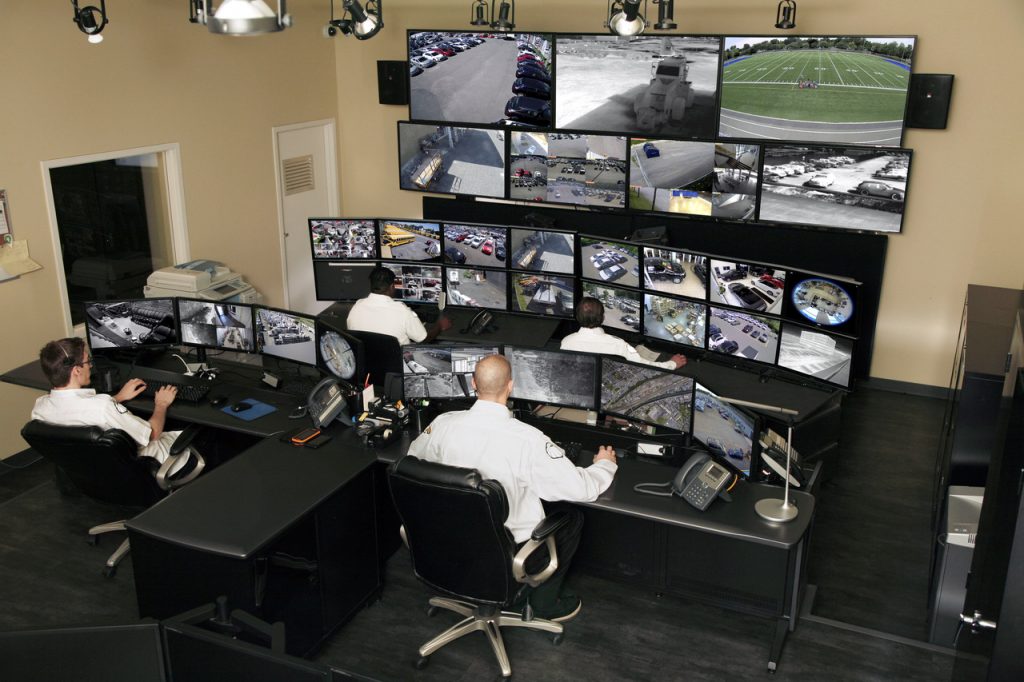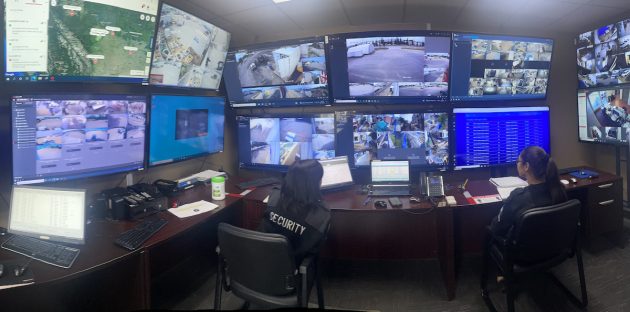
Features
AI in the central station
September 21, 2021 By Brian Baker
 Sirix, based in Laval, Que., provides monitoring and perimeter control for Canadian and U.S. authorized integrators.
Sirix, based in Laval, Que., provides monitoring and perimeter control for Canadian and U.S. authorized integrators. Artificial intelligence-based technology is helping some of Canada’s leading central monitoring stations improve customer service and handle more business without adding employees. And more AI capabilities are on the horizon.
We recently asked three leading station representatives about the technologies in use, the benefits, and expected breakthroughs over the next few years.
The executives included:
- Aleksei Bulavko, research, development and production manager, Radius Security. Radius provides monitoring services across Canada and the Dallas-Fort Worth and Austin, Tex. areas from its Vancouver-based command centre.
- Daniel Cyr, chief executive officer of Sirix, a Laval, Que.-based provider of video monitoring, perimeter control and remote control of specialized equipment, for authorized integrators in Canada and the U.S.
- Fredy Ramsoondar, private investigator for Edmonton-based GPS Security Group, providing western Canada customers with video monitoring, human guards, security audits and planning and emergency services.
False alarm reduction
Camera-based analytics, introduced about 20 years ago, offered motion-based alerts that highlighted potential criminal activity at a monitored site. However, there was a problem — up to 98 per cent of alarms received were caused by non-critical activities such as wind-blown foliage or stray animals. Later, server-based analytics enabled the quick location of events after they occurred.
New artificial intelligence-based software eliminates more than 90 per cent of false alarms by focusing on real-time images of humans and vehicles captured by surveillance cameras. All three executives agreed this is a game-changer for the remote video monitoring industry.
Cyr said Sirix previously declined to accept customers if the analytics they were using weren’t advanced enough. That’s no longer a problem with the advanced AI-based software Sirix now uses.
“Today, the software enables us to monitor virtually any site while receiving fewer false alarms,” he said. “Now we focus on the services we offer and worry less about the equipment we’re monitoring. This helps us grow our business.”
GPS’ Ramsoondar called the new software platforms “essential” to his business as they keep station operators focused on successfully handling true alarms.
“False alarms significantly reduce the time our staff spend verifying the validity of each alert,” he said. “We monitor more than 1,000 cameras each night and now we’re confident we won’t miss the events that matter to our clients.”
Here’s a brief look at how false alarm reduction software is created and works once deployed.
Neural networks within the AI-based software “learn” in a similar way as a human brain. In this tedious and time-consuming deep-learning model, the software is shown millions of sample images of people. Over time, and with human corrections, the software becomes more accurate, recognizing people wearing hats, glasses and varied clothing. Vehicles are added in a similar process.
In the field, alarm-generated video is transmitted to cloud-based software, which eliminates non-actionable activity and sends true alarms to a monitoring station in a process that takes about a second. The software continues increasing its accuracy with use. Also, intelligent video analytics don’t get tired or lose focus, maintaining their accuracy throughout the day.
Radius Security’s Bulavko said he appreciates cloud-based software as it requires no extra devices at the Radius station or on a customer’s property and it’s easy to add cameras as the business grows.

Radius Security’s Vancouver command centre provides monitoring services across Canada as well as Dallas-Fort Worth and Austin, Tex.
Employee retention
The three executives agreed that employee burnout from handling false alarms leads to retention issues. Cyr said Sirix spends three months training new operators to perform the job the way he wants it done. Altogether, the training costs equal a year’s salary for an operator.
“I can’t afford a high turnover rate — that’s the No. 1 thing I worry about,” he said. “Any business is only as good as its employees, so we try to make our operators’ jobs as easy as possible. The improvements we make for our employees are important.”
He gave an example of a monitored car dealership that attached small flags to each vehicle to draw customer attention. When the wind blew, the Sirix station would get as many as 200 alarms a night, driving operators “crazy.” False alarm reduction software eliminated the alerts.
Ramsoondar said GPS provides a financial incentive for each operator successfully resolving an alarm. He said there was never any intention to replace operators with software. Now, any redundant GPS operators work in other areas of the company to help build the business.
Law enforcement
Law enforcement organizations often were burned by false alarms, dispatching officers to a site only to find nothing happening. Today, video monitoring stations work hard to develop and maintain a strong relationship with local law enforcement.
Bulavko said when his operators call law enforcement to dispatch officers, they also can provide a four-digit code enabling officers to use in-vehicle laptops or mobile phones to view an online site map and live video events from the site. Officers learn how many people are involved and if anyone is openly carrying a gun or another weapon.

GPS Security Group, based in Edmonton, provides security and protection services throughout Alberta, Saskatchewan and British Columbia.
Coming soon?
The executives offered opinions on what they see as the next monitoring centre uses of AI-based software. Ramsoondar predicts more filtering capabilities. For example, he said station operators would know a person was a member of a client’s team by identifying a distinctive yellow jacket they wore.
“We’re also hoping for predictive or behavioral capabilities that might catch a criminal event before it happens,” he said. “Software could highlight someone repeatedly walking back and forth or loitering in an area as someone casing a facility.”
Bulavko sees big data as a growing and valuable asset for predicting events.
“Computers are much better and faster at detecting patterns than humans,” he said. “Looking at the data gathered from entire sites, or a single camera over the years, we’ll be able to predict which days and times are most likely to have more alarms and schedule our staff accordingly. Rather than wait for a surprise, we’ll prepare in advance.”
Also, Bulavko said advanced metrics, including the number and type of alarms coming into a station and an operator’s response time, helps managers make many operational decisions. Often, customers want a dashboard enabling them to follow activities.
Cybersecurity is another potential service stations may offer. Ramsoondar said GPS is completing compliance with ISO-27001, an international standard for security management systems used to maintain security for assets such as intellectual property and financial and employee data.
“Once we’ve implemented the program, we’ll assist our clients with their IT systems with an eye on how they’ve structured cybersecurity,” he said. “We’ll provide IT audits and recommendations on ways to enhance security.”
Bulavko said he expects greater acceptance of remote guarding, which offers virtual camera-based patrols to monitor intrusion, fire and other activities. The service also includes two-way audio talk downs and recorded messages to engage with intruders before calling law enforcement.
Integrators can generate recurring revenue selling service contracts from Sirix. Cyr said the company monitors its online connections to end users’ devices, checking for camera and server failure and blocked and misaligned camera views.
“Every day, we remotely check on camera and server health and deliver a report to our integrator customers, helping keep them ahead of problems,” Cyr said. “All the integrators need to do is add their logo and mark up the fee providing a source of RMR.”
AI-based technology is changing how remote video monitoring centers function, making operators more efficient and saving time and resources in other business areas. Technology advances promise even more uses soon. However, it may be years before monitoring centres realize the full promises of AI technology.
Brian Baker is chief revenue officer for U.K.-based Calipsa (www.calipsa.io), a provider of deep learning-powered analytics for false alarm reduction. GPS Security Group, Radius Security and Sirix use Calipsa’s FAR technology platform.
Print this page